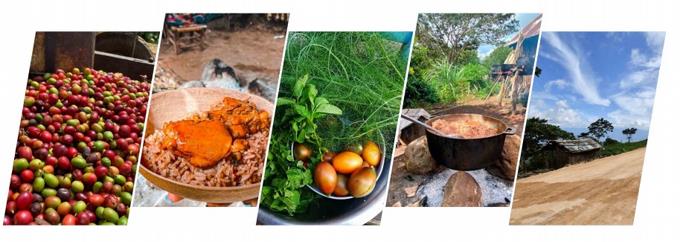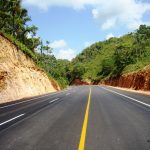Rural tourism: its productive potential in the Higo de la Cruz community

Bahoruco
Located in the southwest of the country, about 22 kilometers from the municipality of Los Rios, in the province of Bahoruco, is the community of Higo de la Cruz.
Crossing mountains full of greenery and an almost celestial landscape, you arrive at this place located in the middle of the Neyba mountain range.
When you reach its plateau, you can delight yourself with the spectacular view, from where you can appreciate everything twice: two countries, Dominican Republic and Haiti; two lakes, Lago Enriquillo and Azuei; two lagoons, Cabral and Limón, and two mountain ranges, Neyba and Bahoruco.
Cabritos Island is also appreciated from the top of this particular mountain, which allows you to visualize the outbreak of La Islita and Barbarita, which return to the light after years submerged after the growth of Lake Enriquillo. On the clearest nights, the lights of Puerto Príncipe are reflected on the horizon as a sign of the majesty of this unique place.
This small and peaceful community is composed of about a hundred families. Agriculture is their primary source of livelihood, but who, proud of their environment, have decided to share their natural wealth and hospitality with those who venture to visit their land.
Higo de la Cruz has been organizing itself to offer experiential tourism. For this, some locals have become nature guides, experts in routes, activities, and tours in its spectacular territory.
What you can do here
Activities as diverse as horseback riding through its lands and landscapes to recreate yourself with the greenery of its meadows, fill your lungs with fresh air, renew your emotional state or get in touch with the community.
For the more adventurous, it is a dream to camp with friends or family in a quasi virgin space, where the night passes between laughter, anecdotes, or just enjoying the melody that emanates from the silence of the night. They thoroughly enjoy this scenery that displays a sky decorated with twinkling stars. The less daring will find modest but comfortable rooms, ready for rest.
Waking up early to delight the senses with a gratifying sunrise, enjoying the excellent morning offered by the chirping birds, and taking advantage of the first rays of sunlight for those who like to capture images are just some of the options to start your day.
An experience that excites many is that of agrotourism… Visiting farms and plots of land where you can learn about the whole process of planting, caring, cultivating, and tasting many of the products that the land of Higo de la Cruz produces… For example, participating in the harvesting, roasting, grinding, and tasting of amber coffee beans, which are produced there and are considered one of the best in the world (you have to meet Doña Ana, an example of hard work and peasant pride).
Going out to the patio to look for mint leaves, orange, anise, lemongrass, or other herbs to warm the soul with an aromatic morning cup of tea is enjoyed at Don Simón’s farm. Collecting yautías and bunches of green guineo to prepare breakfast, accompanied by Creole eggs and a frothy glass of freshly milked cow’s milk, is an experience that will seduce more than one.
Another delight is to walk through the crops of avocado, macadamia, onion, tomato, etc. and on the way pick wild raspberries, guavas, mangoes, oranges, and peaches, and then culminate with a cool dip in the Mango River, a place that surprises with its beauty, the freshness of its waters and the various waterfalls that are part of it.
Enjoying a Creole meal cooked “a la leña” … a moro with coconut, chicken raised in the yard, and avocado from the conuco; all served in a fig tree, brings you back to that country life that many know. You sit under a bush to enjoy the delicacy and accompany it with a lemon juice. Please tell me if it is not ecstasy to the palate!
After having lived this experience and discovering that Higo de la Cruz has much to offer, the appeal is that you encourage you to support this community proposal and discover its treasures so that you can get to know the rural tourism potential of the south.

















